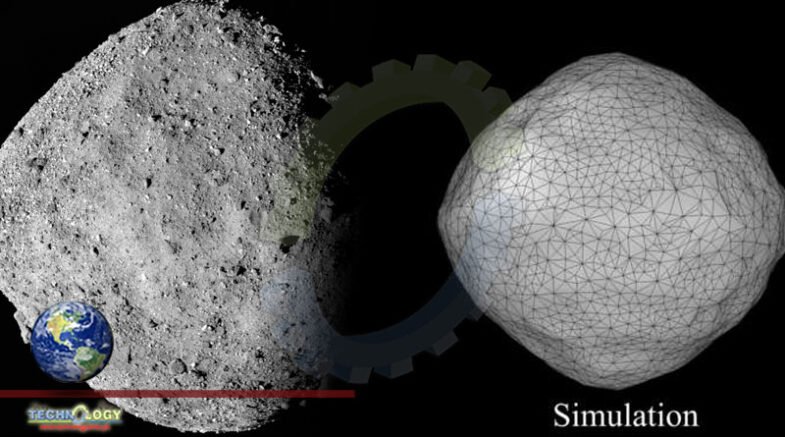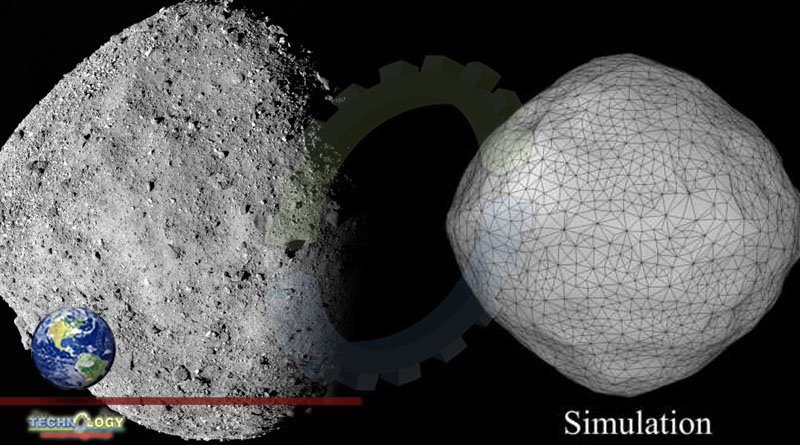Scientists from the Okinawa Institute of Science and Technology Graduate University (OIST) and Rutgers University have used simple concepts from granular physics to explain the curious diamond shapes of two “near Earth” asteroids.

Scientists from the Okinawa Institute of Science and Technology Graduate University (OIST) and Rutgers University have used simple concepts from granular physics to explain the curious diamond shapes of two “near Earth” asteroids.
Asteroids are rocky bodies that orbit the sun. What makes them fascinating to researchers is that they are made up of leftover materials—the matter that didn’t get absorbed into the larger planets when the solar system formed, around 4.6 billion years ago. Thus, they can shed light on the early days of the solar system and the formation of the planets. Most asteroids are trapped in the asteroid belt, a region between Jupiter and Mars. This distance from Earth makes them difficult to study. But, occasionally, an asteroid will escape and drift closer to Earth, making it possible to photograph them up close using an unmanned spacecraft.
This is what happened with these two diamond shaped asteroids—Bennu and Ryugu. Both Bennu and Ryugu are classed as rubble-pile asteroids, which means they are made up of many smaller pieces of rocky material that are loosely held together by gravity. Essentially, they’re just grains that interact with each other, like the sand on our beaches.
“Previous models have attributed these diamond shapes to the forces caused by the rotation, which resulted in material being driven from the poles to the equator. But when the asteroids were simulated using these models, the shape was flattened or asymmetric rather than diamond, so we knew something wasn’t right,” explained Dr. Tapan Sabuwala, lead author of the paper published in Granular Matter and researcher in OIST’s Fluid Mechanics Unit. “We found that these models were missing a key ingredient, the deposition of material. And a simple granular physics model, normally used for the deposition of grains like sand or sugar, could predict the observed shape.”
Imagine pouring sand or sugar through a funnel. A cocktail of different forces will ensure that it forms a conical pile (like a party hat). Granular physicists can predict the shape of the pile based on the different forces that act on the grains. Dr. Sabuwala, alongside Professor Pinaki Chakraborty who leads the Unit and Professor Troy Shinbrot from Rutgers University, transferred these ideas to the asteroids.
Dr. Sabuwala explained how, on these asteroids, gravity is oriented differently compared to that experienced by a sandpile on the beach. “We had to factor this into our model, alongside the fact that the asteroid’s rotation also plays a significant role,” he said.
So, instead of the conical shape seen in the accumulation of grains on Earth, the forces at work on the asteroids produced diamond shapes. The centrifugal force, caused by rotation, decreased near the poles of the asteroids, causing material to accumulate there, and resulting in their distinctive elevated appearance. Another important distinction of this model (when compared to previous ones) is that it suggests that these rubble-pile asteroids did not start as a sphere and deform into a diamond shape. Rather, the accumulation of debris caused the diamond shape to form very early on in the formation of the asteroid, and any subsequent reshaping was minimal. Furthermore, the notion that the diamond shapes were cast during the early stages of the asteroid formation, while at odds with previous models, is consistent with recent observations.
The researchers went on to show the accuracy of this model through simulations and found that the simulated asteroids formed the distinctive diamond shape, further supporting their theory.
“We have used simple concepts of how grains flow to explain how these asteroids assumed their curious shapes,” said Professor Chakraborty. “That simple ideas can illuminate complex problems is, to us, perhaps the most delightful aspect of this work.”
Source Phy.Org
